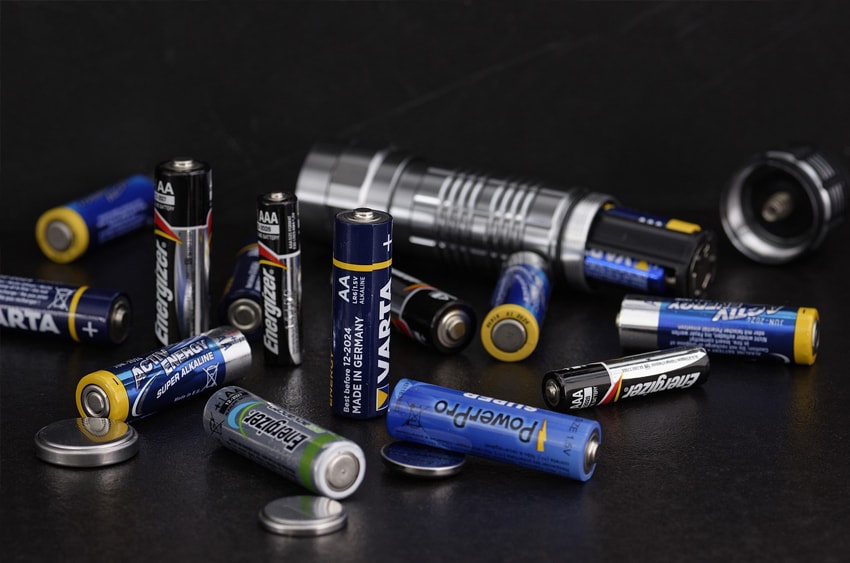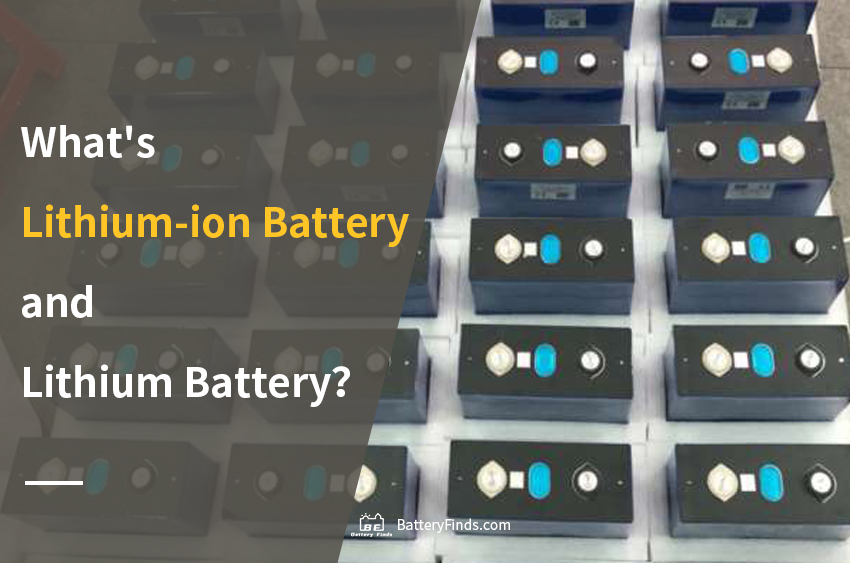In recent years, lithium-ion battery is becoming more and more popular. Whether we are surrounded by cell phones, home appliances, or even electric cars, you can see lithium-ion battery everywhere. But in fact, there is a big misunderstanding that exists, lithium-ion batteries and lithium batteries, is it the same thing?
What are Lithium Battery and Lithium-ion Battery?

Lithium batteries are a class of batteries made of lithium metal or lithium alloy as the negative electrode material, using a non-aqueous electrolyte solution. The initial commercial lithium batteries began in the 1960s. However, it is worth mentioning that lithium batteries today do not refer to one type of battery, but to a large class of batteries containing lithium, including lithium metal batteries and lithium-ion batteries. The former lithium battery has now been renamed “lithium primary battery”.
The Lithium-ion battery is one of the most popular batteries today and is a class of batteries that use lithium compounds (such as LiCoO2, LiMn2O4, LiNiO2, LiFePO4) as the positive electrode and graphite as the negative electrode. It mainly relies on the movement of lithium ions between positive and negative electrodes to generate current. It is generally believed that the beginning of lithium-ion battery was in 1991 when SONY started to produce LCO batteries commercially. Among lithium-ion batteries, the most popular are the LiFePO4 battery as well as NMC/NCA battery. Both batteries are different in their respective areas of preference, with LiFePO4 battery being better at energy storage and NMC/NCA battery being better at power. It is worth mentioning that lithium polymer batteries are similar to lithium-ion batteries, but they are not actually lithium-ion batteries.
What is the difference between Lithium Primary Battery and Lithium-ion Battery?

Currently, lithium batteries do not refer to a single type of battery, but a general term for all batteries containing lithium elements. But in the past, lithium batteries are “primary batteries” containing lithium, also known as lithium primary batteries, that is, there is no way to recharge the battery after the discharge of the battery needs to be recycled. Current the lithium-ion battery can be charged and discharged multiple times, which creates a huge difference between lithium primary batteries and lithium-ion batteries, which can be charged and discharged multiple times, which means more scenarios, such as electric vehicles, energy storage systems, signal stations, electric bicycles and so on.
And the nature of being able to be charged multiple times makes the performance of lithium-ion battery even better, such as energy density and the cycle life, are designed to perform far better than lithium primary batteries. In a sense, the lithium-ion battery is a fully upgraded version of the lithium battery, and all parameters have been greatly enhanced.
What are the benefits of Lithium-ion Battery?

There are actually 3 types of lithium-ion batteries that are used by most people, in addition to LiFePO4 battery and NMC/NCA Battery, and LTO Battery. There is no doubt that all 3 types of batteries have their own areas of expertise. The benefits they bring are also unforgettable.
LiFePO4 Battery
This is the most popular kind of lithium-ion battery, the main reason is that the LiFePO4 battery safety is very high and not too expensive. It is the optimal solution for the replacement of lead-acid batteries. The current energy density will basically be in 120 ~ 160Wh/kg, some good performance can reach 180Wh/kg, and has more than 4000 cycles and up to ten years of life. What’s more, LiFePO4 battery is a very environmentally friendly battery, which will not produce products that pollute the environment. So it makes LiFePO4 battery is the choice of the majority of battery DIY enthusiasts.
NMC/NCA Battery
This is currently the most suitable lithium-ion battery for use in electric vehicles. The energy density is basically above 200Wh/kg, and the instantaneous discharge performance is very good, but also more than 2000 times the number of cycles. At present, most car companies choose to use NMC/NCA batteries.
LTO Battery
LTO battery is a relatively partial door lithium-ion battery, but its advantage is that it is extremely safe and the working temperature is very wide, from -50°C to 60°C can be charged and discharged normally, and has more than 20,000 cycles, these values are much higher than LiFePO4 battery and NMC/NCA battery. However, the energy density of the LTO battery is not high and it is very expensive, which makes it less popular to choose this battery.
Summary
Again, lithium battery and lithium-ion battery are actually two different concepts, but many people have confused them, which is not true. In addition, lithium-ion batteries are undoubtedly the most suitable batteries for our use today, and this is especially the LiFePO4 battery. Proper use of lithium-ion batteries will bring more benefits to our life.

